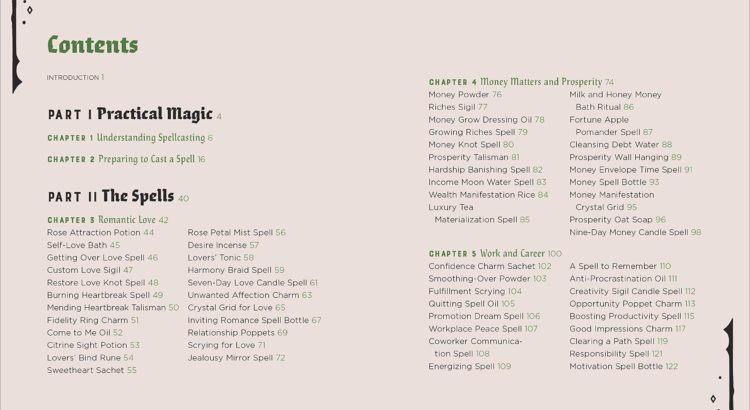 I should preface this review with the universal acknowledgement that just like the weird side of YouTube that many quarantined individuals may find themselves stumbling into, there exists an equally bizarre side of Amazon – and this book hardly scratches its surface. While on a similar downwards trajectory across Amazon’s vast niche book collection, I came across a plethora of modern witchcraft guides, including Ambrosia Hawthorn’s The Spell Book for New Witches: Essential Spells to Change Your Life.
I should preface this review with the universal acknowledgement that just like the weird side of YouTube that many quarantined individuals may find themselves stumbling into, there exists an equally bizarre side of Amazon – and this book hardly scratches its surface. While on a similar downwards trajectory across Amazon’s vast niche book collection, I came across a plethora of modern witchcraft guides, including Ambrosia Hawthorn’s The Spell Book for New Witches: Essential Spells to Change Your Life.
For someone with no prior witchcraft knowledge besides having happened across a handful of Vox witch documentaries, this book managed to clear up any confusing spellcasting terminology. A good quarter of the book is dedicated to understanding the art of spellcasting and educating the reader on spellcasting preparation, which rings true to its intended audience of ‘new witches’, or beginner practitioners. In Part I, Hawthorn clarifies commonly confused magic terminology, such as witchcraft versus Wicca, and even briefly delves into its ethical obligations, warning beginners of the Law of Threefold Return and knowing one’s place within cosmic law. Though I personally have no plans to sew poppets or charge clear quartz under the next full moon, I’m grateful for the author’s emphasis on exercising reason, caution, and stable-mindedness under all spellcasting circumstances.
Hawthorn divvies Part II of the spell book, the spells and their recipes, into seven categories of use: ‘Romantic Love’, ‘Money Matters and Prosperity’, ‘Work and Career’, ‘Friends and Family’, ‘Health and Healing’, ‘Protection and Forgiveness’, and ‘Well-being, Success, and Abundance’. Though I expected witchcraft to require a number of obscure ingredients and esoteric performing instructions, Hawthorn’s spells stress the ‘practical’ in practical magic, with most spells requiring 10 or less ingredients and tools combined. While describing the core principles of witchcraft, which include celebrating your life and sexuality, Hawthorn explains that spellwork should be fueled mainly by “a respect for nature and the mystery of the universe”. She characterizes magic as existing all around us, therefore crystals and herbs should be drawn upon as secondary sources to harnessing our personal power and energies.
Hawthorn’s book promises a wide range of spells designed to suit your every need – whether that be finding a lost item, curing heartbreak, or designing a custom healing sigil. The performance rituals range from simply harnessing crystal energies to boiling herbs; many of the spells can double as quarantine-induced-boredom cures, as Hawthorn makes a point to include cookie recipes, soap, and other self-care spells. Some spells that might be particularly useful to unmotivated students such as myself include: ‘Money Manifestation Crystal Grid’, ‘Wealth Manifestation Rice’, ‘Acceptance Talisman Spell’, and ‘Anti-Procrastination Oil’.



